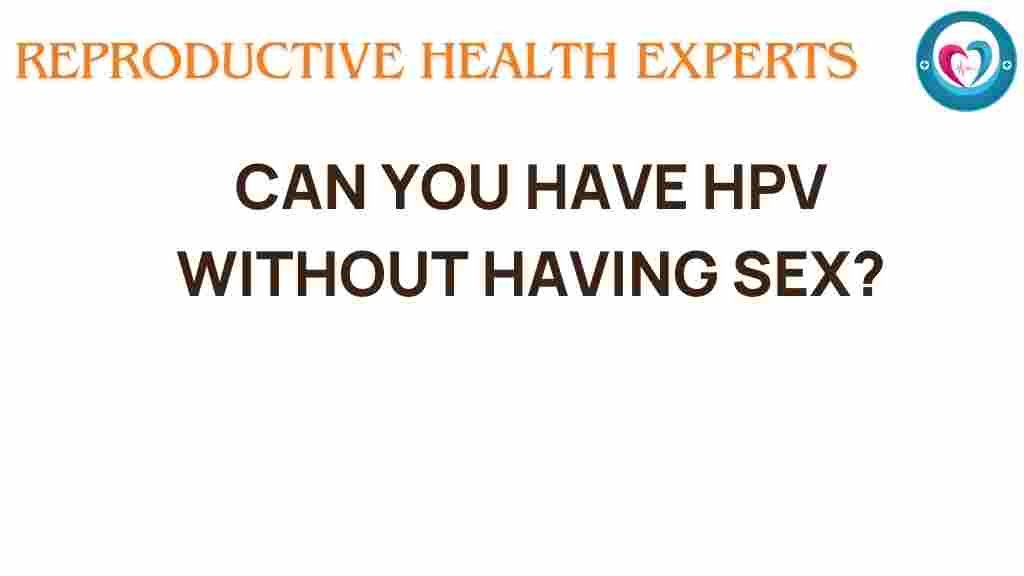Unraveling the Mystery: Can You Have HPV Without Sexual Contact?
Human Papillomavirus (HPV) is one of the most common sexually transmitted infections worldwide. While it is widely known for its association with sexual contact, there are many misconceptions and myths surrounding how HPV is transmitted and who can be affected by it. In this article, we will explore the intricate relationship between HPV and sexual health, focusing on the various transmission methods, prevention strategies, and the importance of awareness and education regarding this virus.
Understanding HPV and Its Transmission
HPV refers to a group of more than 200 related viruses, some of which can lead to serious health issues, including genital warts and various cancers. Most people will be infected with HPV at some point in their lives, often without realizing it. The primary mode of transmission is through direct skin-to-skin contact, especially during sexual activity.
However, the question arises: Can you have HPV without sexual contact? The answer is nuanced. While sexual contact significantly increases the risk of transmitting HPV, there are other potential transmission routes that warrant consideration.
Common Myths About HPV Transmission
To better understand the potential for HPV transmission outside of sexual contact, it’s essential to address some common myths:
- Myth 1: HPV can only be transmitted through sexual intercourse.
- Myth 2: You cannot get HPV if you are not sexually active.
- Myth 3: HPV is only a concern for women.
- Myth 4: You can tell if someone has HPV by looking at them.
These myths underscore the need for comprehensive education and awareness about HPV and its transmission.
Non-Sexual Transmission Routes
While sexual contact is the primary method of HPV transmission, there are several non-sexual routes that can contribute to the spread of the virus:
- Skin-to-Skin Contact: HPV can be transmitted through direct contact with infected skin, even without penetrative sex. This includes contact with genital areas, thighs, or even other parts of the body where the virus may reside.
- Vertical Transmission: Pregnant women with HPV can transmit the virus to their babies during childbirth. This is particularly concerning for certain strains of HPV that may lead to respiratory papillomatosis in infants.
- Sharing Personal Items: There is a low risk of HPV transmission through sharing personal items such as towels or razors that may have come into contact with infected skin.
While these methods are generally less common, they highlight the importance of understanding how HPV can spread beyond traditional sexual encounters.
The Importance of HPV Awareness and Education
Given the potential for non-sexual transmission and the prevalence of HPV, raising awareness is crucial. Education can empower individuals to take charge of their sexual health and reduce the stigma surrounding HPV. Here are some key points to emphasize:
- Know Your Status: Regular screening and testing can help identify HPV infections early, allowing for prompt management and treatment.
- Vaccination: The HPV vaccine is highly effective in preventing the most common and dangerous strains of the virus. Vaccination is recommended for preteens, but it can be given up to age 45.
- Safe Practices: Using condoms and dental dams can reduce the risk of HPV transmission, although they do not provide complete protection.
Steps for HPV Prevention
Preventing HPV is vital for maintaining overall sexual health. Here are some actionable steps:
- Get Vaccinated: Consult with a healthcare provider about the HPV vaccine and ensure you or your children are vaccinated at the recommended ages.
- Practice Safe Sex: Always use barriers like condoms or dental dams during sexual activity to reduce the risk of transmission.
- Regular Health Screenings: Women should undergo Pap smears and HPV tests as recommended by their healthcare providers. Men should also discuss testing options with their doctors.
- Educate Yourself and Others: Share information about HPV and its risks with friends and family to promote awareness.
Troubleshooting: What to Do If You Think You Have HPV
If you suspect you may have been exposed to HPV or have symptoms such as warts or unusual changes in your body, here are steps you can take:
- Make an Appointment: Contact your healthcare provider to discuss your concerns and arrange for testing.
- Be Honest: Share your sexual history and any symptoms with your doctor to ensure accurate diagnosis and treatment.
- Follow Medical Advice: If diagnosed with HPV, follow your healthcare provider’s recommendations for treatment and monitoring.
- Inform Partners: If you test positive for HPV, inform any recent sexual partners so they can seek testing and take necessary precautions.
Conclusion
In conclusion, while the primary mode of HPV transmission is sexual contact, it is essential to recognize that the virus can spread through various means. Increasing awareness and education about HPV is crucial for reducing stigma, promoting prevention, and ensuring individuals take proactive steps in their sexual health. Remember, HPV is common, and being informed is the first step toward taking control of your health.
For more information on HPV and sexual health, check out the CDC’s HPV page. If you’re looking for additional resources on prevention and education, visit Planned Parenthood’s website.
This article is in the category Conditions and created by ReproductiveHealthExperts Team
